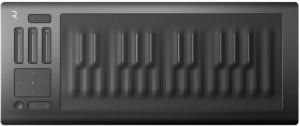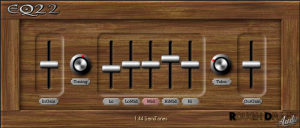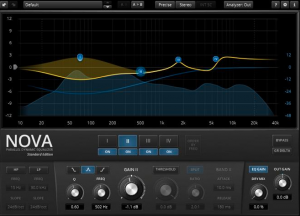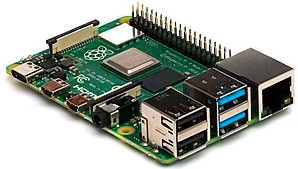Around the new year a radio station here in the U.K. has a programme featuring experts predicting what will happen in the year ahead. Generally their predictions seem entirely credible, yet so often are shown to be less than prescient a year down the line. In fact the significant events often seem to be something that came up out of the blue. Perhaps these events are so significant because no one saw them coming?
So prediction – a mug’s game played by fools and quacks.
As we start a new decade it is time to preen my feathers, dust down my marotte and step up to the crystal ball. Here are my predictions for electronic music production over the next decade.
Resurgence in digital synthesis. Early digital synths, exemplified by the Yamaha DX7 typically had few real time controls, unfamiliar paradigms and terminology and tedious programming interfaces. Things started to change with the likes of the Access Virus and Roland JP800 which were equippped with a more direct, hands on programming experience. Ironically the latter offerings used digital technology to emulate and (allegedly) overcome some of the shortcomings of the analogue fore runners.

With the advent of the recent analogue revival musicians can now purchase a genuine analogue instrument for similar money to a virtual analogue, with the virtual instruments deemed pale imitations of the real thing, with some musicians sneering at digital instruments as VSTi’s in a box. Dismissing digital synths out of hand overlooks the special flavours these can bring to the sonic smorgasbord.
So my predication is for a greater acceptance of modern digital synths. Recent releases point to this, for instance the Elektron Digitone (F.M.); Korg Wavestate (wavesequencing) and Modal Argon 8 (wavetable). In a market saturated with analogue synths there is space for friendly physical modelling; user friendly F.M.; scanned synthesis; granular synthesis and more.
More expressive and innovative controllers. The race has started on this, most notably with the Roli Seaboard. This reimagines the midi keyboard as a slab of corrugated squidgy black spongy stuff. Connected to the right piece of software the Seaboard can be played like a piano keyboard with enhancements such as the facility to shape the sound according to where the key is pressed and how hard. A player skilled in the art of striking, pressing and wobbling their fingers can convey expression on a note by note basis in a way that hasn’t been possible with conventional midi keyboards, or acoustic keyboard instruments for that matter.

The great advantage of midi is the standardisation of how electronic music making tools communicate with each other and the announcement of the new midi polyphonic expression specification (MPE) by the midi association opens the door to creating expressive controllers that will work with older technology and also newer, MPE equipped synths.
Not convinced? Here’s the wonderful Cuckoo with the Osome by Expressive E.
Artificial intelligence and assisted composition. I’m not talking about auto-accompaniment here, or arcane software that generates music based on fixed algorithms. Instead think about software and machines that use the musical information you play in, or the rules you apply that assist you by transposing and embellishing the raw musical material. These ideas are already present in some current instruments: the probability features in sequencers such as Elektron and Arturia, the wild transformations and spot effects in Teenage Engineering’s offerings and the uber-arpeggiator that is the Conductive Labs Ndlr.
Using these tools is fun and inspiring, similar to playing with other musicians where the surprises take your music in interesting directions. As artificial intelligence develops we can imagine tools that learn our preferences or recognise the type of music being written to contribute music and stylistically relevant ideas.
The track Dancing on the Lawn was created with Ndlr which arpeggiates around the underlying chords
Improved user interfaces. The current crop of knob encrusted hardware synths marks a welcome shift away from the menu diving synths of the eighties and nineties.
Arguably it is software that now needs to catch up. I understand that some musicians appreciate software that looks like a piece of hardware – on a music forum I remember users requesting wooden end cheeks on graphic renderings! If musicians keep requesting such visual flummery we will miss out on the opportunities for more creative and inspiring interfaces. How about painting your own waterfall plots? Using colour shades to describe the sound? Directly drawing the amplitude profile or e.q. curve? When you can do these things directly would you still need buttons and sliders? Possibly, yes, for fine adjustment and because they do work particularly well for tasks such as mixing.

So here’s hoping we forget the wooden end cheeks and welcome graphical user interfaces that blend traditional, emulative approaches with more innovative, creative approaches.

The small print. At the outset I suggested that the most significant developments are often the ones that nobody predicted. Will it be someone hammering out a piece of code, an innovative use of micro-computers, or way out hardware design? Time will tell…
